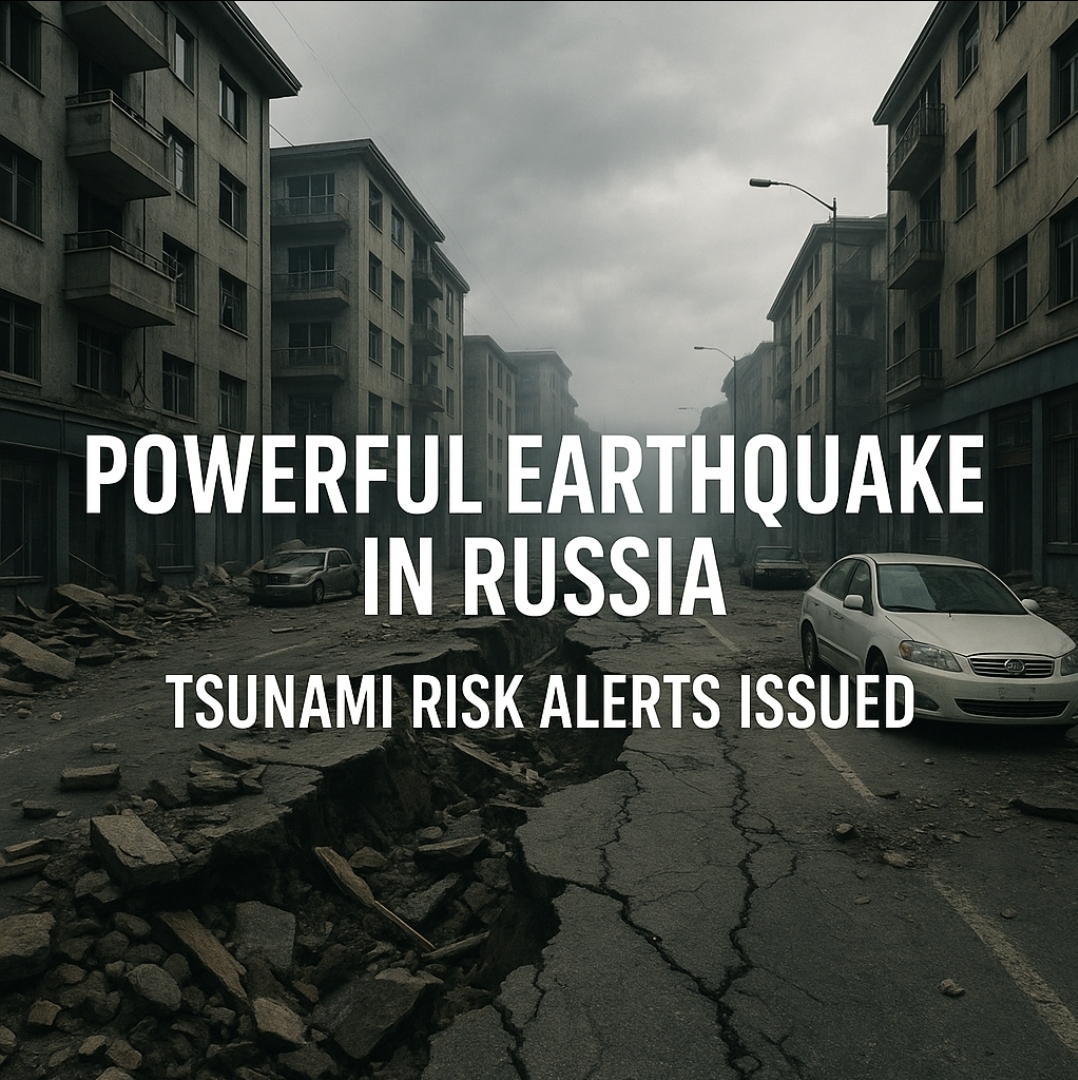In the early hours of [insert local date], a powerful earthquake struck off the eastern coast of Russia, triggering widespread tsunami alerts and raising fears across the Pacific region. With a magnitude of [insert official magnitude, e.g., 7.8], the quake originated deep beneath the seabed near the Kamchatka Peninsula — a seismically active zone known for producing massive tremors.
🔴 Immediate Impact in Russia
Residents of the Russian Far East were jolted awake as buildings swayed and emergency sirens blared. Though initial reports indicate minimal structural damage and no loss of life, the psychological toll was significant. Many residents rushed out of their homes in the dark, fearing aftershocks or tsunami waves.
Local emergency services issued evacuation warnings for coastal areas, urging people to move to higher ground. Videos circulating online showed people lining up at gas stations and highways packed with fleeing vehicles.
🌊 Tsunami Alerts in Japan and the U.S.
What made this earthquake particularly alarming was the ripple effect it caused thousands of miles away. Within minutes of the quake, Japan’s Meteorological Agency issued tsunami advisories along its northern coastline, especially in Hokkaido and the Tōhoku region. Similarly, the U.S. Pacific Tsunami Warning Center activated monitoring protocols for Hawaii, Alaska, and parts of the West Coast.
Although tsunami waves remained below dangerous levels in most locations, authorities maintained alerts for several hours due to the unpredictability of aftershocks and underwater displacement.
“Even if no large wave arrives, strong currents can still cause life-threatening conditions,” said a spokesperson from the National Weather Service.
🧭 Why One Earthquake Can Affect Distant Shores
You might wonder: how can an earthquake in Russia pose a risk to coastlines in Japan and the U.S.? The answer lies in the ocean’s vast connectivity and the nature of megathrust earthquakes—the most powerful type of quake, typically occurring in subduction zones. These quakes can displace enormous volumes of water, sending shockwaves across the Pacific Ocean in all directions.
🔍 What’s Next?
Geologists and tsunami experts continue to monitor the situation. The possibility of aftershocks — some potentially strong — remains high for the next few days. Coastal residents in all affected areas are advised to remain alert and follow updates from official sources.
This event serves as a sobering reminder that natural disasters don’t recognize borders. Even if you’re thousands of miles from the epicenter, the ocean’s currents and waves can carry danger across continents.
📢 Safety Tips If You Live in a Coastal Area:
Always have an emergency go-bag ready.
Sign up for real-time weather and tsunami alerts.
Know your local evacuation routes.
Never underestimate a tsunami warning, even if it seems minor.
Disclaimer: This article is based on real geological events and public warnings, but some descriptions have been dramatized for narrative effect. The image associated with this article is AI-generated for illustrative purposes only.
